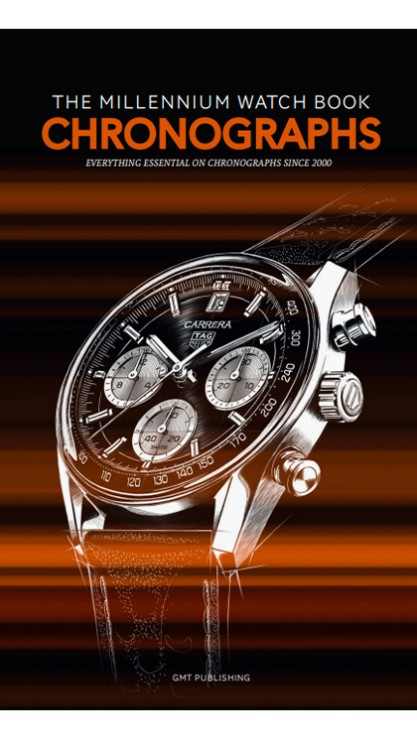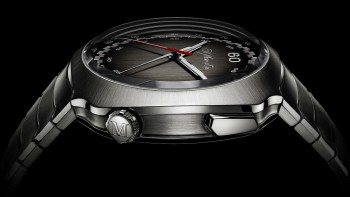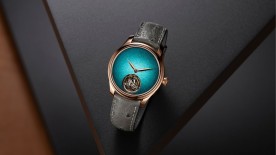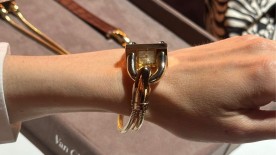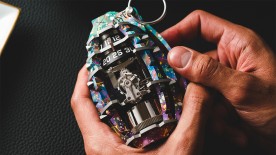The biggest surprises often come from the margins, where independent watchmakers and their creative freedom constantly demonstrate the vital importance of their contriution — or multiple contributions, as in the case of the Streamliner Flyback Chronograph Automatic. This is not only a chronograph, but also the first model in a collection that H. Moser & Cie. has since added to. The timepiece isn’t immediately recognisable as a chronograph, breaking free from the firmly entrenched canons of watchmaking culture — as well from those of the brand that created it.
Creating a diversion
H. Moser & Cie. is a classic brand that is both understated and refined. Its mechanical approach is sophisticated, yet systematically comes in a simple envelope. In that respect, the Streamliner is a pure product of H. Moser & Cie. With its four central hands (two for the time and two more for the chronograph) the display, bereft of totalisers, recalls that of the brand’s exemplarily discreet perpetual calendar. The two pushers located in ‘bullhead’ fashion (either side of 12 o’clock like a pair of bull’s horns) are also initially visually deceptive, while placing the crown at 4 o’clock deconstructs the traditional order yet further.
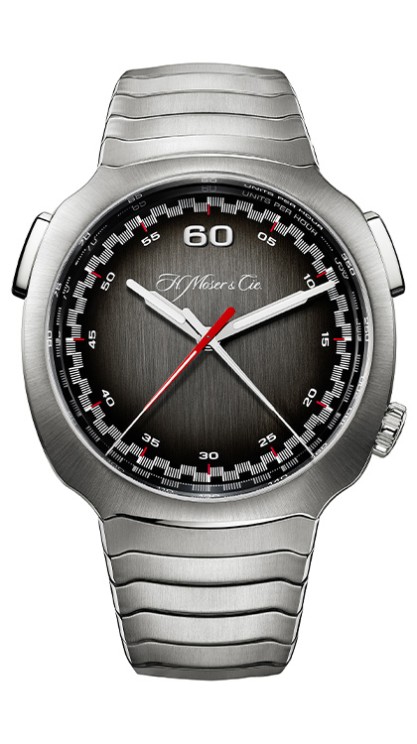
Disguise
The Streamliner Flyback Chronograph Automatic stands out first and foremost for its styling. The case is curved in all three dimensions, resembling a dome flattened at the crystal. The rising form of the bezel is highlighted by an intense sunburst finish. While the case could be described as cushion-shaped overall, that rather vague definition doesn’t do it justice; similarly, one hesitates to pin down the design. Is it 1930s, as the sketches inspired by Raymond Loewy that accompanied its launch suggest? Is it 1970s, the era of all sorts of daring forms? Is it futuristic, as hinted at by its biomorphic surfaces, recalling the iconography of space opera? The shape of the one-piece links in the bracelet — wavy, with a soft, matte finish — argues in favour of the latter; but the way the strap blends in seamlessly with the lines of the case, very much in fashion during the early 2020s, makes you think again.
Refocusing
The Streamliner stands alone in terms of its functional, aesthetic and singular appearance. This in itself is a rare thing, since contemporary watches can be tame and repetitive. But there’s a lot more to design than simply drawing. Essentially, design is supposed to serve the related function and in this case, ensure its wearability; making these complex forms comfortable wasn’t at all easy, not least because with a width of 42.3mm and a thickness of 14mm, the Streamliner is anything but compact. Despite this, the wearing experience turns out to be extremely satisfactory. It fits on small wrists very easily given its dimensions. The bracelet is perfectly articulated, fitting snugly round the tightest curves — and above all doesn’t leave any gaps between the links (often a weak point in builds as wide as this one). The rise of the case up to the bezel and domed crystal appear to be an organic extension of the wearer’s arm. The dial is easy to read, with a graduated chapter ring resembling 1970s motor-racing chronographs, with a tachymeter scale concealed in the flang.
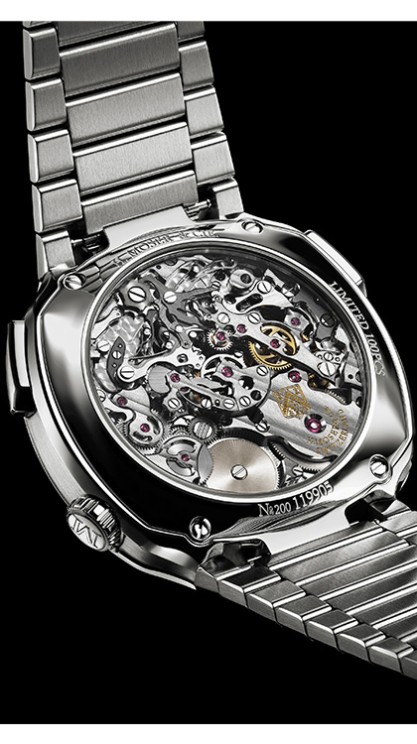
Recomposing
In addition to these assets, the Streamliner Flyback Chronograph Automatic also happens to be a chronograph. Its HMC 902 calibre is produced by Geneva-based movement maker Agenhor. Everything about it is unusual: the shape of its bridges, the layout, the indications (all central), the edge of its column wheel, the number of leaf springs. Fans of industrial design and connoisseurs alike have much to delight them. The model includes a flyback function, with the reset mechanism using the retrograde technology admirably mastered by Agenhor. As a bonus, they’ve designed an automatic movement whose rotor doesn’t obscure the movement — quite simply (and quite unexpectedly) because it’s located on the dial. This layout also explains why the Streamliner Flyback Chronograph Automatic doesn’t have any off-centred counters; they would have got in the way of the rotor. In a final flourish, the pushers can be activated underwater. These finishing touches all relate to the fundamental aim of design: realising the full potential of form and function.
H. Moser & Cie. Streamliner Flyback Chronograph Automatic
CASE: steel, sapphire crystal glass and caseback, water resistant to 120m
DIMENSIONS: 42.3mm diameter, 14.2mm thick
MOVEMENT: self-winding mechanical movement, HMC 902 calibre, thickness: 7.3mm; 434 components, 3Hz, 54-hour power reserve
FUNCTIONS: hours, minutes, flyback chronograph with two pushers and two central hands
DIAL: smoked, satin finish, grey-black, Globolight hands, tachymeter scale flange
BRACELET: integrated, satin-finish steel, folding clasp
LAUNCH YEAR: 2020
This year GMT Magazine and WorldTempus have embarked on the ambitious project of summarising the chronograph since the year 2000 in The Millennium Watch Book - Chronographs, a big, beautifully laid out coffee table book. This article is an extract. The Millennium Watch Book - Chronographs is available in both French and English here.
